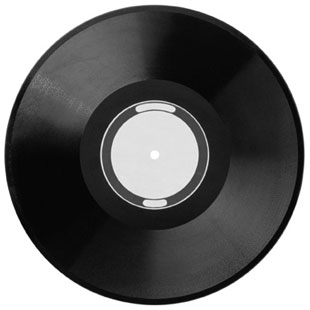RIAA Pre-Amplifiers

RIAA Pre-Amplifiers
Equalising the phono signal
Vinyl records have three basic problems: it is physically impossible to press them with ridges that end up allowing low frequencies to come out at the same reproduction level as mid and high frequencies.
Bass compensation is therefore needed during playback. Secondly, records produce a certain amount of hiss which is covered up in post-production by boosting the gain of the high frequencies before pressing. Counter-EQing during playback compensates for this. Finally, magnetic cartridges produce a weak signal which must be boosted to match the rest of the amplification and this too is done during playback. In the mid-1950s, compensation standards were established by the Recording Industry Association of America.
The resulting RIAA preamp has been built into every hi-fi and stereo amplifier with phono or turntable inputs since then. A separate RIAA preamp is necessary when you are connecting a turntable to a mixer which does not have one built in.
The phono preamplifier is the key component needed to match the output of the turntable to the line input of the amplifier or audio mixer. If you've tried connecting a turntable to a modern amp or hi-fi unit and you're not happy with the results, it's probably because you don't have a suitable turntable input.
Manufacturers tend not to include a turntable input anymore because the vast majority of customers don't play vinyl. However, you can still obtain turntables and magnetic pick-up cartridges. The signal from these pick-ups is much smaller than from a CD, tape deck, radio tuner or auxiliary source - so if you connect to any of those inputs you'll not have much volume. Also the tone will be totally wrong - all treble and no bass. What you need then is a phono preamplifier, it connects between turntable and amplifier or hi-fi unit. It lifts the signal to the required level and restores the tonal balance.
Phono preamplifiers explained
Retrieving the signal from a record groove takes carefully balanced engineering to restore the sound back to the original so it can be applied to the input of an amplifier or audio mixer.
All gramophone records are cut with falling bass (LF) and rising treble (HF) below and above some mid-range frequency (MF). It's this trick that makes it possible to keep the groove a constant width.
It is a phono preamplifier's job (otherwise known as gramophone amplifiers, turntable pre-amps or vinyl disc equalisers) to precisely perform the opposite effect to that of the record cutting machine. This is called equalisation (EQ for short) which boosts the bass and cuts the treble by just the right amount. It also has to amplify the tiny signal from the pick-up cartridge, with minimal noise and distortion, so it's big enough to drive an amplifier.
Tip: The MMC 4 combined stylus/cartridge - in common with all B&O cartridges - is a form of moving magnet cartridge. It is slightly different and actually has a slightly lower output than average, but when combined with a pre-amplifier you should use the MM input. It is designed to use a load of 47 K Ohm/220pF so the 235pF is probably the one to try. The lower output will only mean that you will need a little more gain than normal on the amplifier. Remember to ground the deck if this is not already the case!
Note about Beograms:
Beogram 3000 (Type 59xx) does not have a built in RIAA amplifier and relies on this being in the receiver used with it. Beomaster 3000 - which this deck was designed to work with - has the RIAA built in as do almost every receiver before this time, including the Beomaster 8000. Later equipment such as the Beomaster 7000 and Beomaster 3500 and Beomaster 4500 transferred the RIAA to the record player as this allowed a longer cable to be fitted to the record player and gave better siting options.The following list of B&O Beogram turntables shows those with built-in RIAA pre-amplifiers and those without:
RIAA amplifier built-in to the turntables:
1200 +GF3
3000 +GF4
In addition the following Beograms could be fitted with a CD4 demodulator as an option, in order to raise the output to line level. There is a switch on the right hand side of the deck to identify them:
Without an RIAA amplifier built-in:
1201
Created: 11th January 2007
Modified: 22nd March 2007


